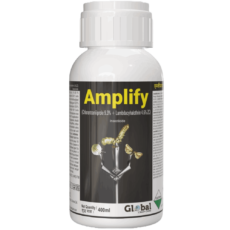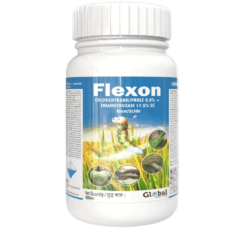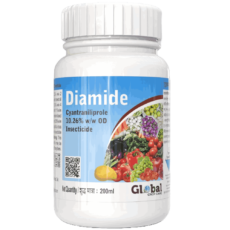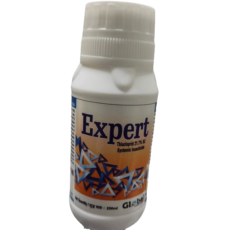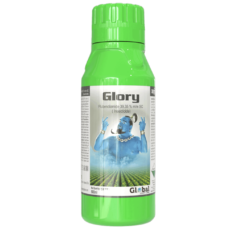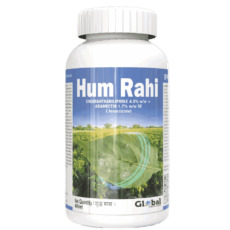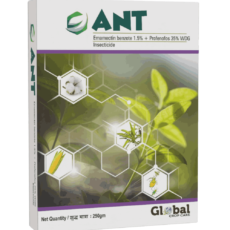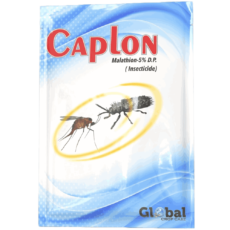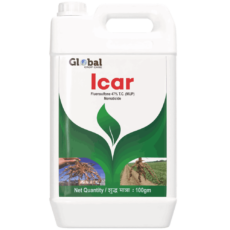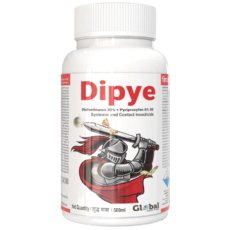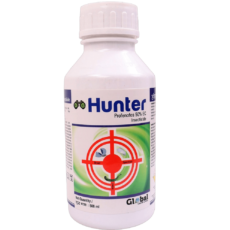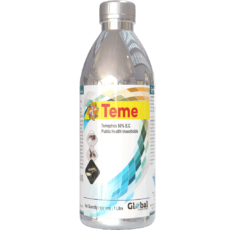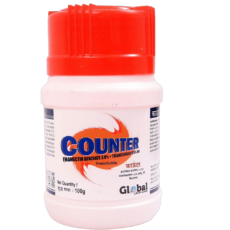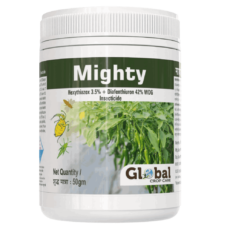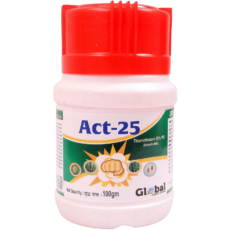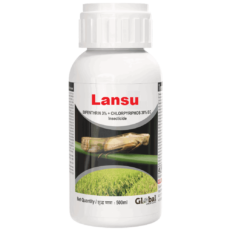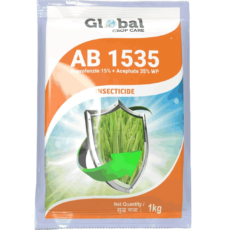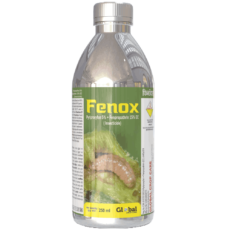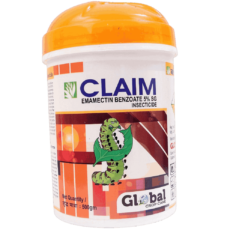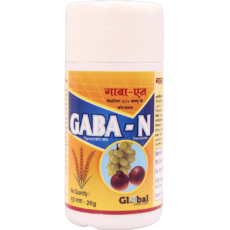Description
| Crop(s) | Common Name of Pest | Dosage/HA | Dilution in Water (lts) | Waiting Period (days) | |
| AI (gms) | Formulation (gms) | ||||
| Chilli | Thrips (Scirtothirips dorsalis), Aphids (Aphis gossypil) | 293.75 + 58.7 | 625 | 500 | 7 |
| Cotton | Thrips (Thrips tabaci), Leaf opper (Amrasca devastans), White fly (Bemisia tabaci), Aphid (Aphis gossypil) | 293.75 + 58.7 | 625 | 500 | 30 |
Takata, Difenthiuron 47% + Bifenthrin 9.4% SC is a suspension concentration containing Difenthiuron 47% (a.i.) + Bifenthrin 9.4% (a.i.) in the formulation. It is a broad spectrum contact and stomach insecticide used for the control of Thrips, Leaf hoppers, White fly & Aphids in Cotton and Thrips & Aphids in Chilli. Caution : This product is toxic to fish and aquatic invertebrates and thus the products containing the molecules may avoided near aquaculture.
Direction of Use
Measure out required quantity of Difenthiuron 47% w/w + Bifenthrin 9.4% w/w SC and mix it well with required quantity of water by using knapsack Sprayer fitted with hollow cone nozzle with spray volume @ 500 L/ha. Application Techniques: Foliar application. Instruction for mixing: Thoroughly mix recommended quantity of Difenthiuron 47% w/w + Bifenthrin 9.4% w/w SC in to water volume recommended for unit area. Stage for application: Vegetative stage and at the time of incidence of the pests. Plant protection Equipment: knapsack Sprayer fitted with hollow cone nozzle. Dosage: Please refer the above table. Pre-Harvest Interval: Please refer the above table. Weather conditions: Do not spray during windy conditions. Soil: Light to heavy soil.
Time of Application
spray to be initiated when pest population reaches economic threshold level (ETL).
Precaution
1. Keep away from foodstuffs, empty foodstuff containers and animals food. 2. Avoid contact with mouth, eyes and skin. 3. Avoid inhalation the spray mist. spray in the direction of wind. 4. Wash thoroughly the contaminated clothes and parts of the body after spraying. 5. Do not smoke, drink, eat and chew anything while spraying. 6. Wear full protective clothing while mixing and spraying.
Symptoms Of Poisoning
Poisoning may cause symptoms of subdues behavior, prostration, lethargy, piloerection, headache giddiness, vertigo, nausea, vomiting blurred vision, sweating, excessive lacrimation & salivation.
First Aid
1. If person is conscious and alert rinse mouth with water and give 1 or 2 glass of water to drink. Never give anything by mouth to an unconscious person. Call the doctor. Don’t induced vomiting until and unless desired by attending physician. 2. If inhaled: Take the patient to fresh air and take care of body temperature. If patient is not breathing or breathing with difficulty, give artificial respiration, preferably with mouth breathing. Consult a physician. 3. In case of skin contact: Wash with soap and plenty of water. If pain, redness or irritation persists, consult a doctor. All the contaminated clothes should be segregated and thoroughly washed with soap and water separately before use. 4. In case of eye contact: Rinse gently with plenty of water at least 15 minutes. If pain, irritation redness or photophobia persists. Consult eye specialist.
Phytotoxicity
The product is not phytotoxic when used as per recommendation.
Antidote
There is no specific antidote. Treat symptomatically and give supportive therapy.






